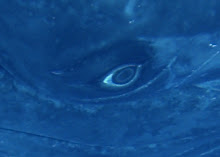Here are some results from Dr. Carlos Yaipen Llanos's tests on dolphins washed up on Peruvian beaches. These tests were undertaken by ORCA - Peru and funded by BlueVoice. Additional results will be published here shortly.
As previously reported, two species have been affected: Long beaked
common dolphin (Delphinus capensis) and Burmeister’s porpoise (Phocoena
spinipinnis). We counted 615 common dolphins. All age classes were
affected: Adult males, females, lactating females, juveniles, calves and
newborns. We counted 19 porpoises, only females and calves.
There are carcasses in different degrees of decomposition and every 10
to 30 meters, none of them older than 5 weeks. This matches with the fact
that these strandings happened right after our previous survey. We found
animals recently dead (no more than 12 hours) and several carcasses of
juveniles and calves showed “rigor mortis” as being dead on land, then
stranded alive (stiff arc position, beak open, belly down, transversal to
tide line, no more than 3 days dead).
Necropsies were performed on site. Macroscopic findings include:
hemorrhagic lesions in the middle including the acoustic chamber,
fractures in the periotic bones, bubbles in blood filling liver and
kidneys (animals were diving, so the main organs were congested), lesions
in the lungs compatible with pulmonary emphysema, sponge-like liver. So
far we have 12 periotic samples from different animals, all with different
degree of fractures and 80% of them with fracture in the right periotic
bones, compatible with acoustic impact and decompression syndrome.
Subscribe to:
Post Comments (Atom)

No comments:
Post a Comment